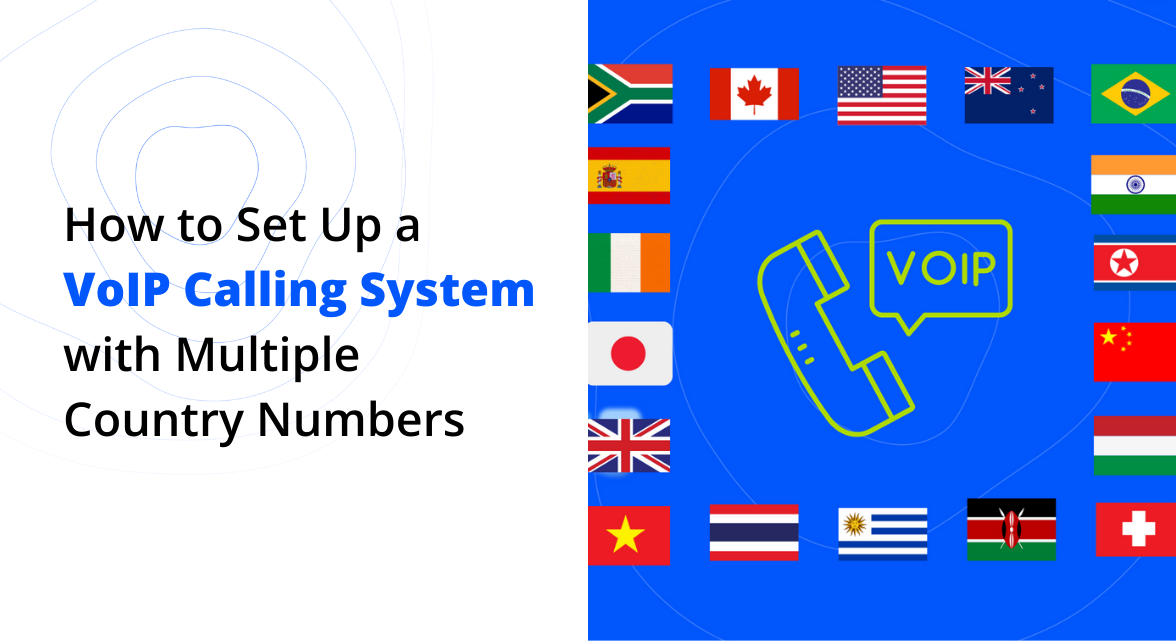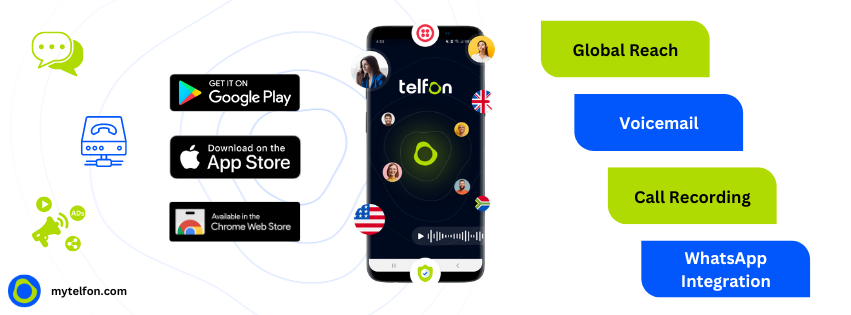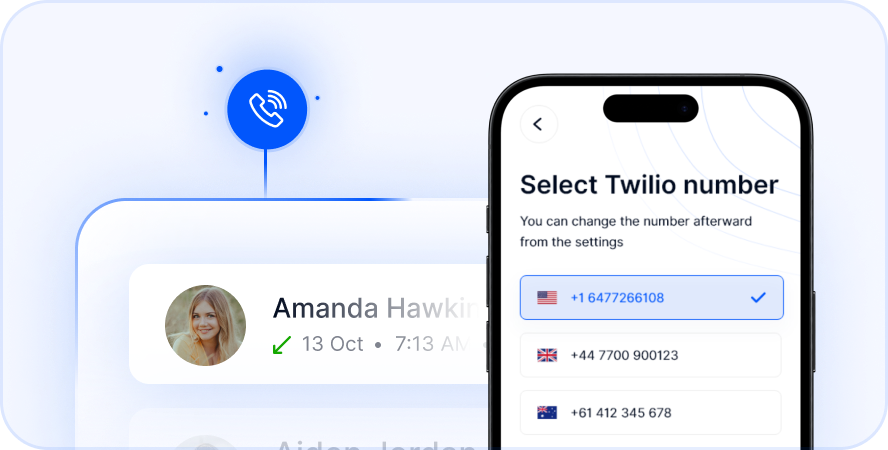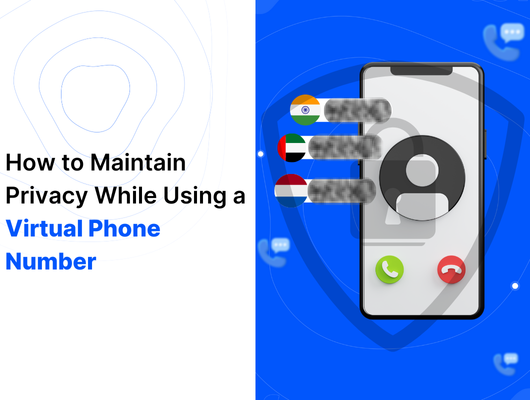
The modern business landscape is more global than ever. In today’s fast-paced digital world, communication is crucial, and the ability to connect with clients across multiple countries efficiently can make or break a business. Whether you’re running a small startup, an expanding company, or a large multinational corporation, setting up a VoIP calling system with multiple country numbers can streamline your communications and boost your business operations.
Gone are the days when businesses had to maintain expensive physical phone lines in every country where they operate. Now, thanks to VoIP (Voice over Internet Protocol) technology, you can set up multiple country numbers with ease, all from the comfort of your office. This blog will walk you through the steps to set up a VoIP calling system, the tools you need, and how it can transform your business.
Why You Need a VoIP System with Multiple Country Numbers
Having multiple country numbers gives your business an edge, helping you build a local presence globally without the need for a physical office in every country. Here’s why it’s essential:
- Increased Accessibility: Customers can reach you using a local number, eliminating international calling costs.
- Boosted Customer Trust: Having a local number in their country increases your credibility and shows commitment to the region.
- Improved Efficiency: Managing calls from different countries becomes seamless, as all calls are handled through a single system.
- Cost Savings: No need for physical phone lines or expensive international calls. Everything is done over the internet, significantly reducing costs.
Now, let’s dive into the steps to set up a VoIP calling system and handle multiple country numbers efficiently.
Step 1: Choose the Right VoIP Service Provider
The first and most crucial step is to choose the right VoIP service provider. Not all VoIP providers offer support for multiple country numbers, so it’s important to pick one that does.
Here are the key factors to consider when selecting a provider:
- Global Coverage: Ensure the provider offers local numbers for the countries you want to target.
- Scalability: As your business grows, you’ll need a provider that can scale with you.
- Integration Options: Check if the service integrates with your existing systems, such as CRM or helpdesk tools.
- Customer Support: VoIP systems run over the internet, so having reliable customer support is vital in case of any issues.
A good VoIP provider will make it easy to set up and manage multiple country numbers.
Step 2: Setting Up Virtual Numbers for Different Countries
Once you’ve chosen your VoIP provider, it’s time to set up virtual numbers for the countries you wish to operate in. Here’s how:
- Select Your Countries: Identify the key markets where you want local phone numbers. This could be based on where your customers are located or where you plan to expand your business.
- Purchase Virtual Numbers: Most VoIP providers allow you to purchase virtual numbers for various countries. These numbers can be easily linked to your main communication system.
- Configure Call Routing: Decide how incoming calls will be routed. You can route calls to different departments, individuals, or locations depending on the caller’s country of origin.
- Localize Your Voicemail and Greetings: Make sure that your voicemail and automated greetings are in the local language to enhance customer experience.
Virtual numbers give you the flexibility to expand internationally without needing a physical office or phone line in each country.
Step 3: Integrating the VoIP System with CRM and Business Tools
For businesses, integrating the VoIP system with other business tools such as a Customer Relationship Management (CRM) system is essential. Integration allows you to streamline your communication processes and enhance customer service.
- Customer Insights: Integrated systems allow you to track call history, customer interactions, and preferences in real-time.
- Improved Customer Support: Seamlessly manage customer queries across regions, improving efficiency and response times.
- Sales and Marketing: VoIP systems integrated with CRM help sales teams track and manage international leads more effectively.
- Automation: Automate follow-up calls, texts, or emails based on interactions, improving engagement with international clients.
Integration not only improves efficiency but also enhances the overall customer experience, making your business more responsive to their needs.
Step 4: Configuring Advanced Features for International Calling
VoIP systems come with a range of advanced features that make international calling easier and more efficient. Here are a few key features to configure for your multi-country setup:
- Call Forwarding: Forward calls from one country’s number to another. For example, if no one answers the French number, it can automatically forward to your UK office.
- Auto-Attendant: This feature directs callers to the right department or individual based on their location or inquiry.
- Call Recording: Record calls for training or quality assurance, especially useful for handling multiple languages and time zones.
- Voicemail to Email: Voicemails can be transcribed and sent to your email, ensuring that no message is missed, even if it’s from a different time zone.
By leveraging these features, your business can ensure it’s available and responsive to clients across the globe.
Telfon: The Ultimate VoIP Solution for Multi-Country Numbers
When it comes to setting up a VoIP calling system with multiple country numbers, Telfon is one of the best cloud telephony solutions available today. Whether you’re managing international clients or expanding into new markets, Telfon simplifies communication with its wide range of features.
Why Telfon?
- Global Reach: Telfon provides calling services in over 170 countries, ensuring your business can establish a local presence almost anywhere.
- Multiple Language Support: Telfon supports over 15 languages, making it easy to communicate with international clients in their preferred language.
- Call Recording and Voicemail: Stay on top of international customer interactions by recording calls and receiving voicemails directly via email.
- WhatsApp Integration: Communicate seamlessly through WhatsApp using your VoIP system, a popular tool for businesses and clients alike.
Setting up a VoIP system is easy with Telfon, as it provides a customizable and scalable solution for businesses of any size. Additionally, the platform integrates smoothly with CRM systems and other business tools, offering an all-in-one communication platform for your international needs.
Ready to simplify your international communications? Get started with Telfon today and expand your business globally with ease.

Step 5: Ensuring Data Security and Compliance
When handling international communication, especially with VoIP systems, ensuring data security and compliance is critical. Each country may have specific regulations regarding data privacy, such as GDPR in Europe.
- Encryption: Ensure all VoIP calls and data are encrypted to protect against cyber threats.
- Data Localization: Some countries require that customer data be stored locally. Check if your VoIP provider offers data storage options that comply with local regulations.
- Compliance Audits: Regularly audit your VoIP system to ensure it complies with international regulations, especially in regions with strict data privacy laws.
Step 6: Monitoring and Optimizing Your VoIP System
Once your VoIP system is up and running, continuous monitoring and optimization are key to ensuring smooth operation.
- Track Call Data: Monitor call volume, missed calls, and response times for each country’s number to assess performance.
- Customer Feedback: Regularly gather feedback from your international customers to identify any pain points in communication.
- Optimize Call Routing: As your business grows, adjust your call routing system to ensure the most efficient communication channels.
- Expand as Needed: As your international presence grows, continue adding country numbers and scaling your VoIP system accordingly.
Conclusion
Setting up a VoIP calling system with multiple country numbers is a game-changer for businesses looking to expand internationally. It allows you to establish a local presence in any country, enhancing customer trust and improving communication efficiency.
By following the steps outlined above—choosing the right VoIP provider, setting up virtual numbers, integrating with CRM, and leveraging advanced features—your business can streamline its global communication.
Tools like Telfon make the process even easier by offering a comprehensive, scalable solution for handling multi-country calls. With the right VoIP system in place, you’ll be ready to connect with customers and partners worldwide effortlessly.












